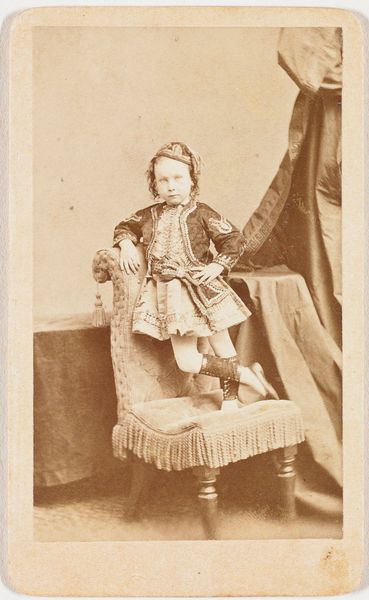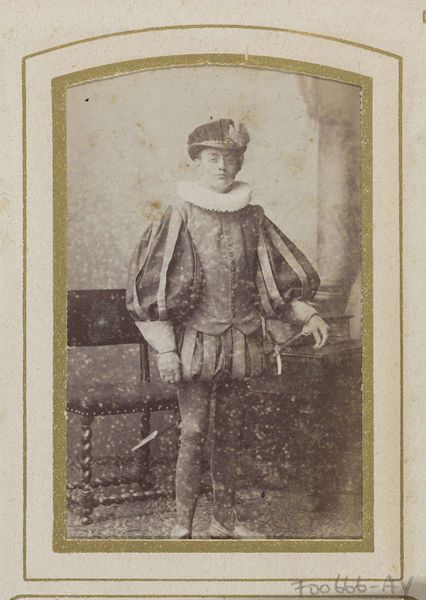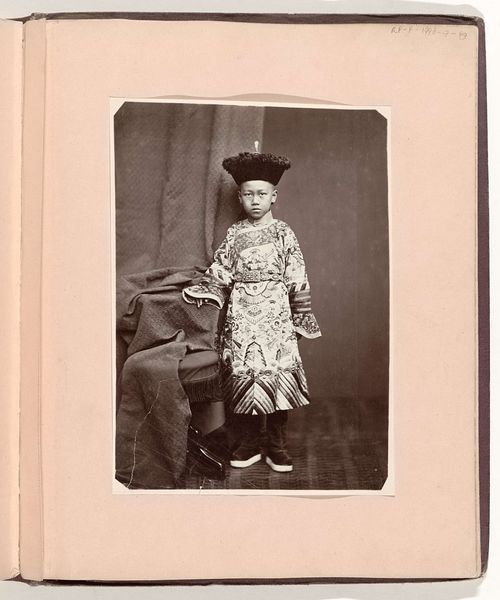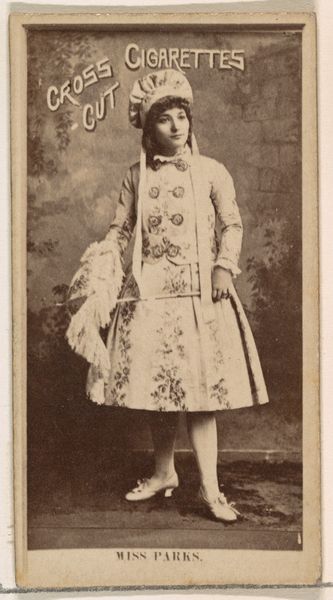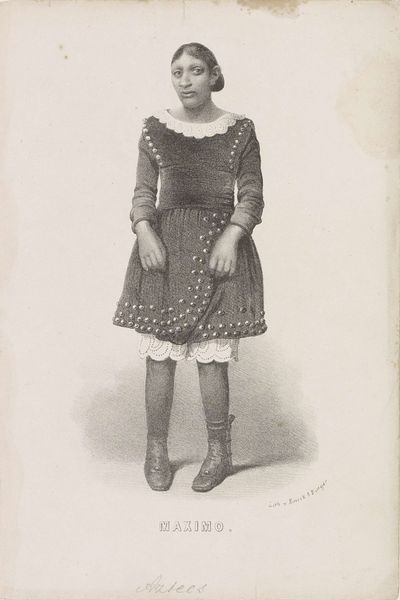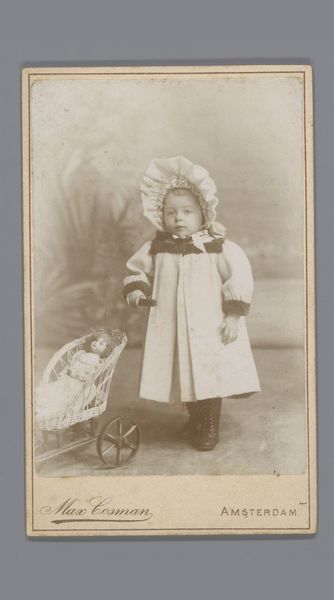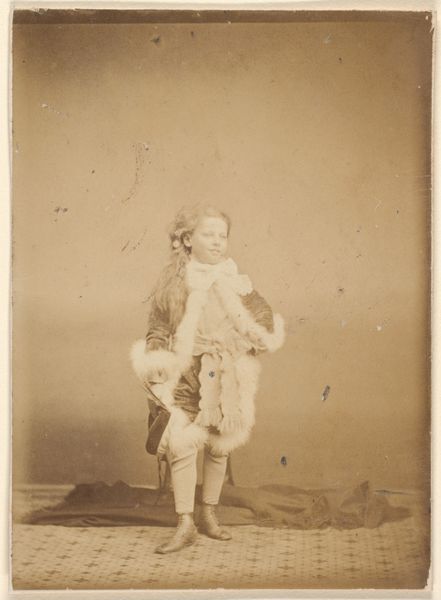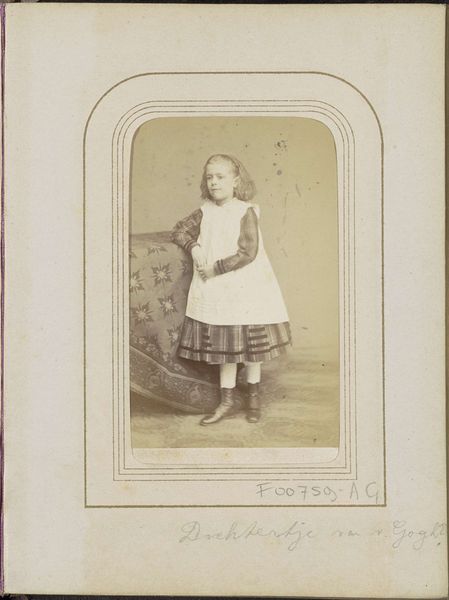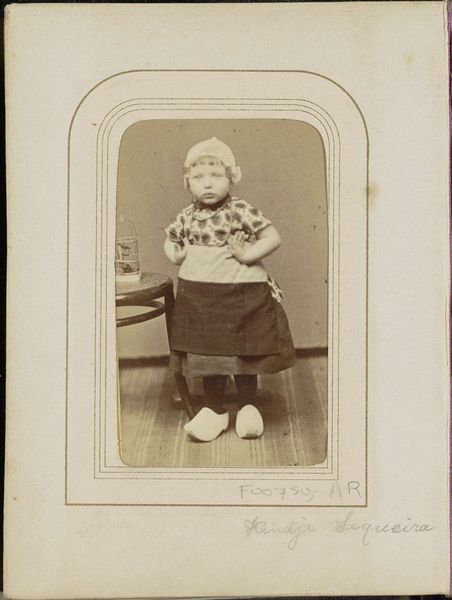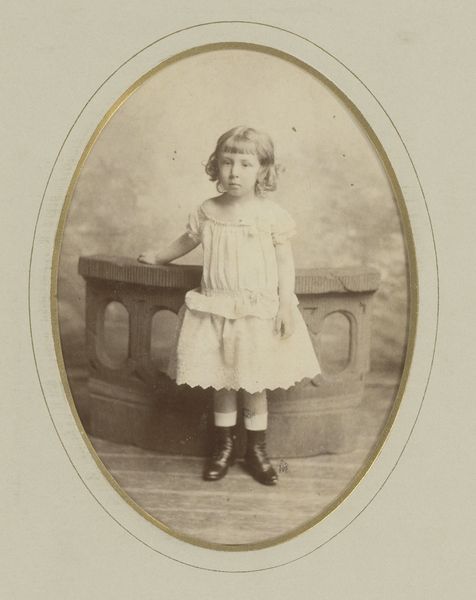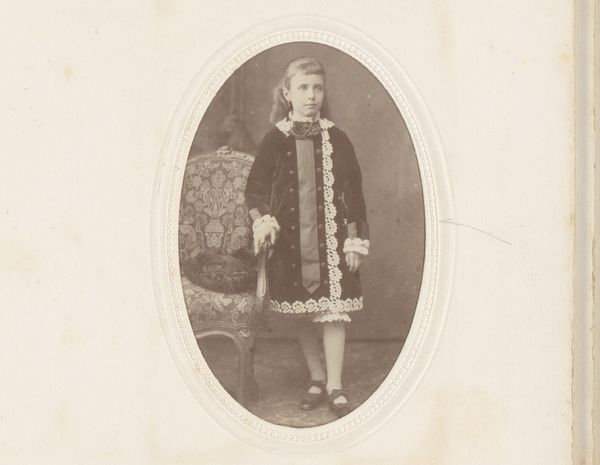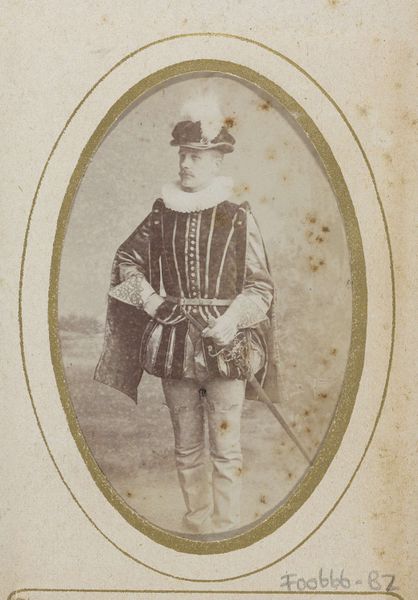
photography
#
portrait
#
photography
#
genre-painting
#
history-painting
Dimensions: height 254 mm, width 206 mm
Copyright: Rijks Museum: Open Domain
Editor: This is a photographic portrait from between 1860 and 1863, titled "Portret van Alexander, prins der Nederlanden" and attributed to Johan Hendrik Hoffmeister. It strikes me as quite formal and somewhat melancholic for a child's portrait. What symbolic significance do you see in this piece, especially considering the historical context? Curator: Indeed, the formality is striking. Notice the carefully chosen details: the ornate chair, the Prince's somewhat stiff posture, his elaborate feathered hat, the very subtle domestic scene depicted in the background... These weren’t simply decorative. They’re imbued with the iconography of power and inheritance, presenting the young Alexander as a figure already bound by duty and destiny. It presents this person, a child, in a way that telegraphs what his life will mean: What are your first impressions? What emotions do these visual cues evoke for you? Editor: It's interesting how the photographer is constructing an image of royalty, even through such a young child. I sense a deliberate attempt to instill a sense of respect and, perhaps, even awe, in the viewer. The symbols you've pointed out seem almost heavy, especially given his age. Curator: Exactly! And what about the choice of photography itself? In an era still captivated by painted portraits, photography offered a new kind of realism, a supposed objectivity. Here, it serves to legitimize and solidify the image of royalty. Consider also how childhood itself was being redefined at this time – evolving from miniature adulthood to a unique phase worthy of protection, and the photograph itself as memory-keeper. This is also a photograph printed from a negative -- copies could then circulate and reinforce the intended imagery of the Dutch monarchy. Editor: I see what you mean. The use of photography adds another layer to the symbolic meaning. I hadn’t considered that the seemingly "objective" medium was being used to promote a very specific, constructed image. Curator: It's a fascinating intersection of art, technology, and power. Looking closer, we reveal the complex web of meanings woven into even the simplest-seeming image. Editor: I’ll certainly look at 19th century photographs with a different perspective now, thinking about the intended audiences and what symbols are intentionally constructed to make them have certain feelings.
Comments
No comments
Be the first to comment and join the conversation on the ultimate creative platform.
